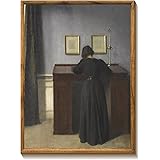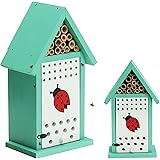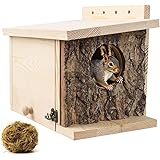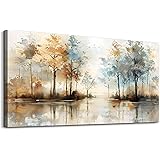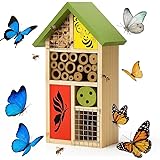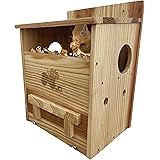A native of eastern Asia, the multicolored Asian lady beetle (Harmonia axyridis) was introduced into the United States for biological control of other insects in 1916. This insect, of the family Coccinellidae, is an important predator of aphids and scale insects on crop plants. Although this beetle is considered a beneficial pest in agriculture, its presence in homes and other buildings in the fall is a nuisance that often causes confusion and concern.
When the weather turns cool, adult lady beetles move indoors searching for overwintering sites. The females are particularly active, clustering in cracks and crevices where they can lay eggs for the following spring. The overwintering beetles may subsequently move outside and then back into the house. This activity can disrupt household activities and cause damage to fabrics and woodwork.
While the multicolored Asian lady beetle is generally considered a benign pest, some people consider it a nuisance because they tend to congregate in large numbers on the exterior of houses, sheds and other structures. This behavior is similar to the activity observed in the beetle’s native habitat of rocky cliffs and outcroppings where the beetles seek shelter to overwinter. While the beetles do not feed inside homes and other buildings, they can cause a sticky mess if they come in contact with food or drinks. In addition, they can leave behind a yellowish secretion that stains surfaces and emits an unpleasant odor when squashed.
The beetles do not bite, but when agitated or squashed they can exhibit a defensive reaction that causes them to excrete a foul-smelling liquid from their leg joints. This defensive fluid is called reflex bleeding and is intended to deter predators such as birds from eating the beetles. Although not dangerous to humans, this fluid can irritate skin and stain fabrics.
Unlike the native, more common “Ladybug”, the Asian Lady Beetle has a narrower, more pointed head and a darker shell color that is typically orange to bright red with a black ‘M’ marking in the spot where the neck meets the wings. The Asian beetle has also been observed to have larger white “cheek” markings and a wider margin of white on the top of the head than the Native Ladybug.
The most effective method of controlling the multicolored Asian lady beetle’s invasion of residential and commercial structures is to deny the insects entry through a process known as pest proofing. This is most effective when done in the late spring and summer before the adult beetles begin flying to overwintering sites. Cracks around windows, doors, soffits and fascia boards, utility pipes and wires should be sealed with caulk. Chimneys and attics should be covered with number 20 mesh screen to keep the beetles from nesting in the attic space.
